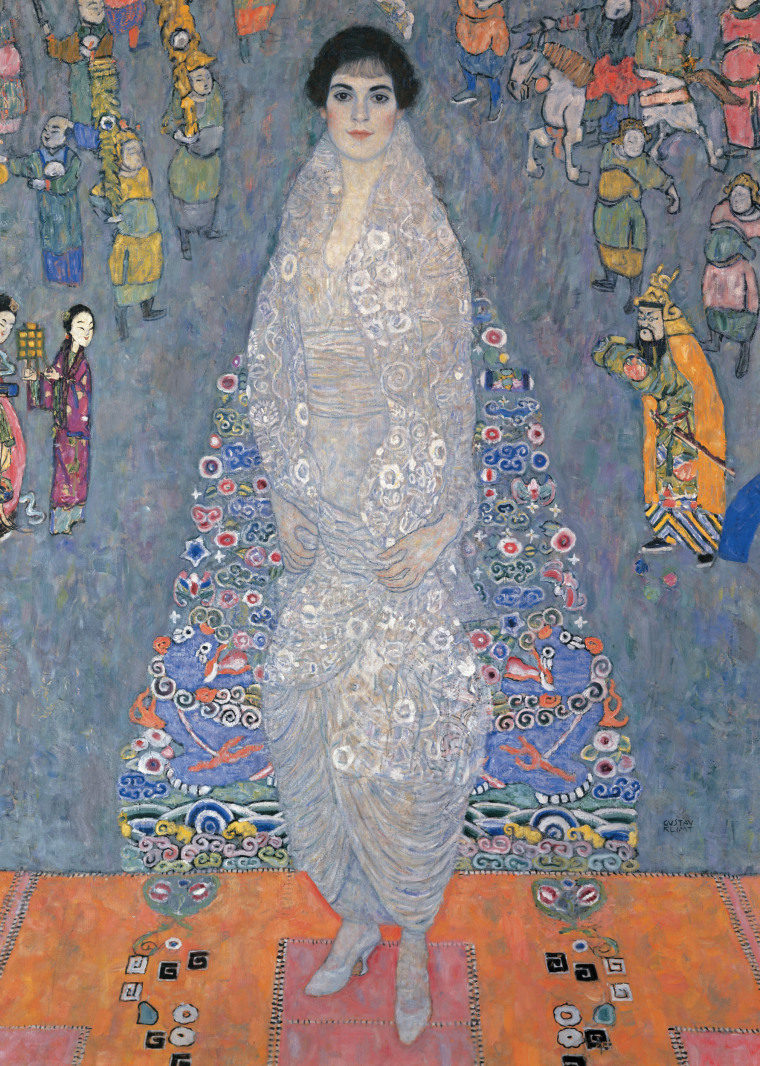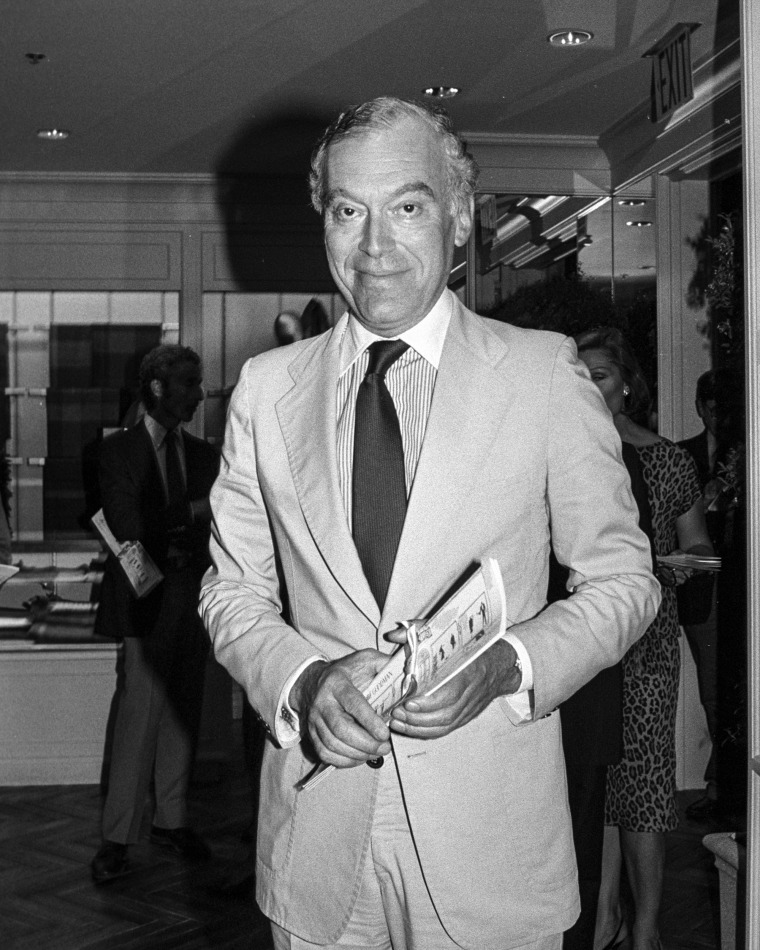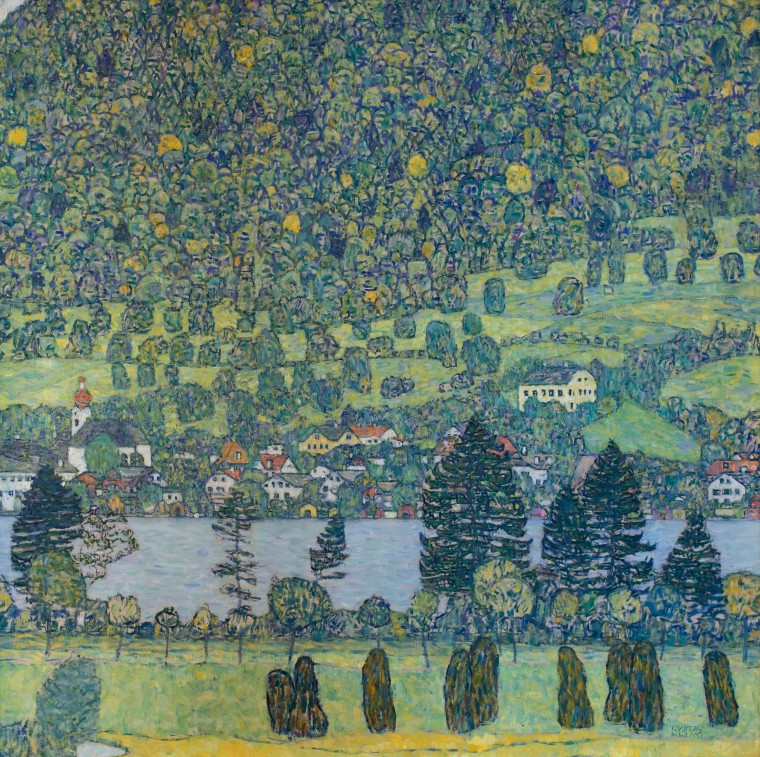For one top Sotheby’s executive, this year’s auction season feels like destiny.
“This is the season I’ve waited for my whole life,” Lisa Dennison told NBC News, standing near the radiant Gustav Klimt canvases soon to be auctioned.
“To be in this building and to have the collections we have this season — it’s everything,” said Dennison, the auction house’s executive vice president and chairman of the Americas.
At the center of it all is one of the most anticipated art sales in the last several years: the private art collection of Leonard Lauder, the philanthropist, cosmetics heir and legendary collector who helped shape American museums — much like his mother, Estée Lauder, shaped beauty culture as a giant of cosmetics.
The works will be auctioned off beginning on Tuesday.
Leonard Lauder, who grew up during the Great Depression, died in June at 92, leaving behind some of the most prized artworks in the world. The highlight of the 55 works that will be auctioned off is a painting that could shatter records: a full-length portrait by Austrian master Gustav Klimt, “Portrait of Elisabeth Lederer,” estimated to sell for more than $150 million.
The portrait is historic not only for the high purchase price it is expected to bring, but for its rarity. There are only two full-length portraits by Klimt left in private hands. One is in a private collection that may never come on the market; the other is this one.

Painted between 1914 and 1916, the portrait shows Lederer draped in an imperial Chinese robe, surrounded by Asian motifs and patterns. “He elevates her to almost mythical stature,” Dennison said. “The sensitivity of the face and the richness of the robe — it’s regal, transcendent and deeply modern.”
Emily Braun, Lauder’s longtime curator, has held a front-row seat to one of the most remarkable art collectors of our time. Braun said Lauder had a natural eye, “but he knew he had to study more, to look, constantly and to learn.”
That drive began with him collecting Art Deco hotel postcards as a young boy in Miami, before he moved to wartime propaganda posters and finally to priceless paintings amassed throughout his lifetime. Lauder donated his entire collection of more than 100,000 postcards to the Museum of Fine Arts in Boston.
At the Whitney Museum of American Art, where he started as a member and rose to chairman, Lauder helped the museum acquire 1,000 works — about one-tenth of its entire collection.
“He cared deeply about quality and legacy,” Dennison said. “If he believed in something, he wanted it to be the best of the best.” (Lauder was once quoted as saying: “Only buy the best, don’t be a bottom fisherman.”)

Sotheby’s took over the former Whitney Museum on Manhattan’s Madison Avenue and, since its grand opening on Nov. 8, the lines have been snaking around the block for a chance to see rare artworks about to be sold to the highest bidders from all over the world.
Christina Dickerson, a San Francisco resident, comes from an art-collecting family and wanted to see the works in person.
“I don’t know many people who could amass a collection like this anymore, we’re lucky to see it in one place, the sad part is it’s going to go all over the place, and I truly hope some museums pick it up, so the general public can get to see the art again,” Dickerson said.
It remains to be seen whether or not collectors come and spend top dollar for these rare pieces. The art market has been in a slump recently. Sales in the international high-end art market declined 12% in 2024, according to the Art Basel and UBS Global Art Market Report.
Lauder may be best known for donating his $1 billion collection of Cubist masterpieces to the Metropolitan Museum of Art.
Braun said Lauder’s connection to Klimt was aesthetic, intellectual and deeply personal. Lauder, whose family had Hungarian and Czech heritage, started to collect Klimt’s works in the 1970s. The paintings carried echoes of tragedy, Braun said: Lauder’s wife, Evelyn, fled Vienna as a child because she was Jewish, so the painting’s story “had a multilayered meaning for him.”

For decades, the Elisabeth Lederer painting hung above his dining room table.
“People were terrified someone might back a chair into it … but it was never going to happen,” Braun said.
Braun would not reveal how much Lauder paid for the masterpiece when he purchased it in 1985.
In addition to the “Elisabeth Lederer,” two more Klimt majestic landscapes are for sale, including “Blooming Meadow,” estimated at $80 million, created in 1906 at the height of his career, and “Forest Slope in Unteach,” estimated at $70 million, painted in 1917. The latter shows a dense forest overlooking the Attersee lake in Austria.
All three works remain in pristine condition — miraculous survivors of persecution, war, transit and time.
Sotheby’s will offer 24 works from Lauder’s collection in Tuesday’s sale, with an additional 30 pieces hitting the auction block on Wednesday.
In addition to the Klimts, there will be glistening Matisse bronzes, Agnes Martin abstractions and a rare Edvard Munch.
“For Leonard, collecting was never about ownership,” Dennison said. “It was about preservation, education and beauty — and this sale is the ultimate expression of that.”
This article was published by NBC News on 2025-11-18 07:00:00
View Original Post





